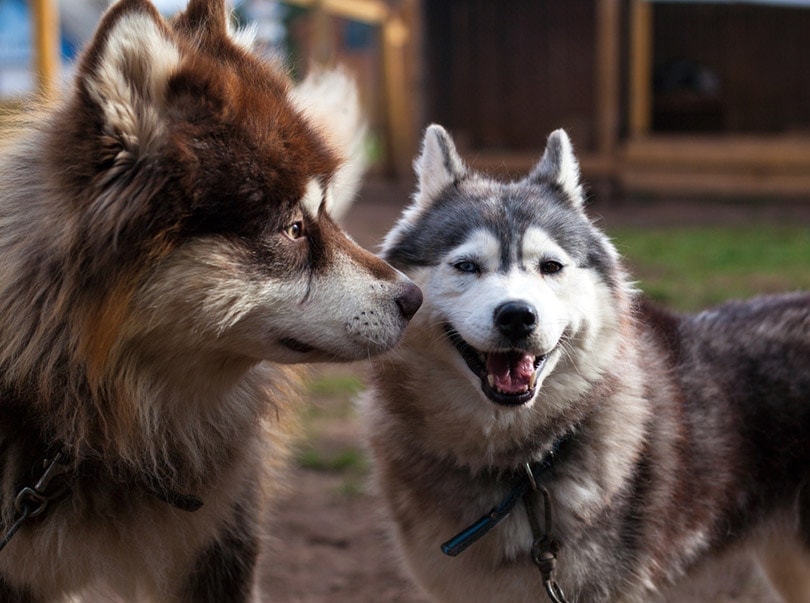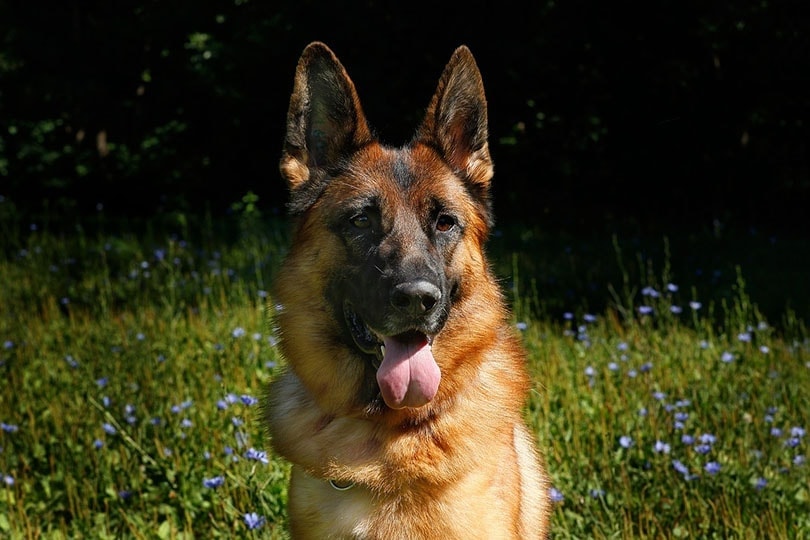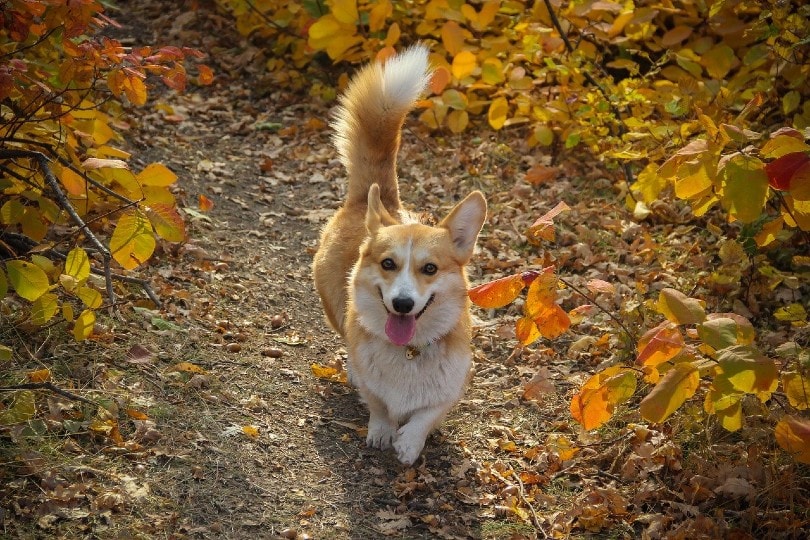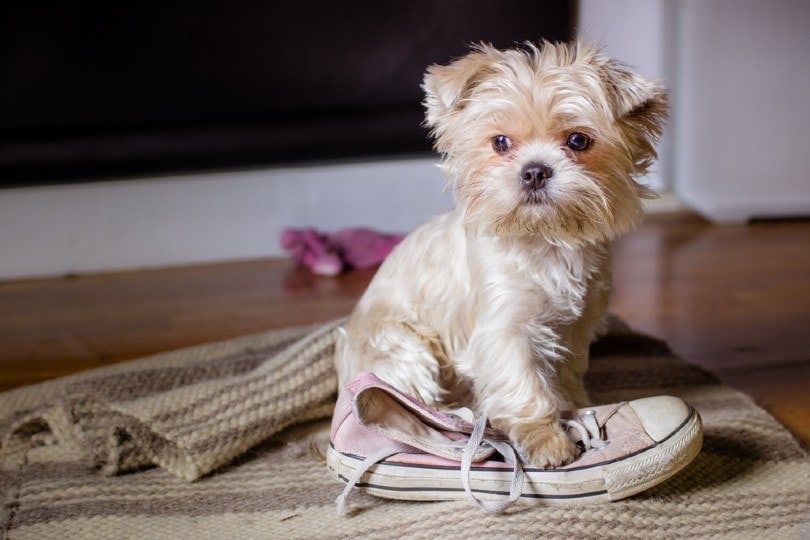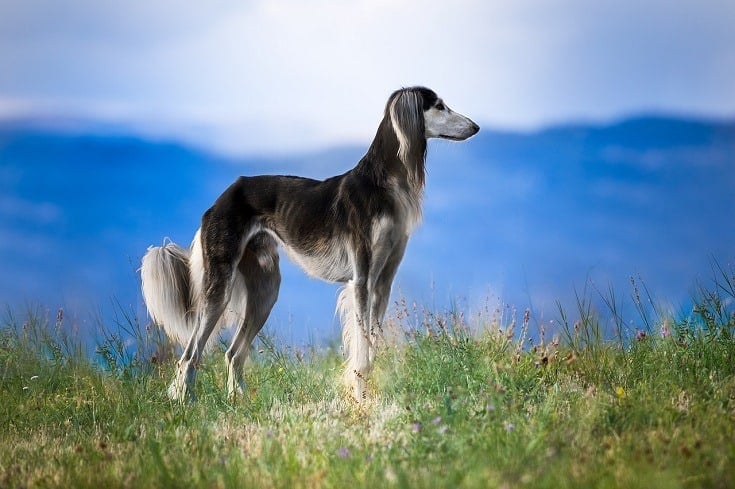The Husky originally dates back to the sled-pulling working dog of the northern regions. In keeping with the pure definition of “Husky”, only true sled dogs have been compiled in the list below—with one exception. We have included the Miniature Husky as it intends to mirror its larger cousin the Siberian Husky, just in a smaller version. How many different types of Husky breeds are there? Well, we discuss our favorite 8 types of Husky dogs here. Keep reading to learn about them!
The 8 Types of Husky Dog Breeds
1. Alaskan Malamute
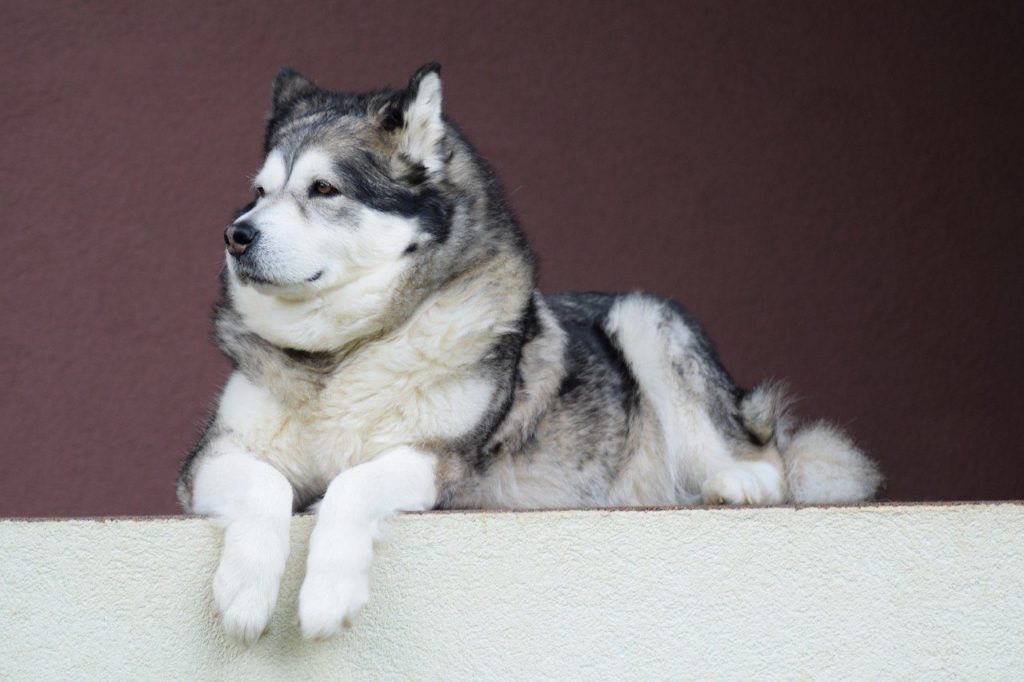
Standing between 23 and 26 inches at the shoulder, the Malamute will weigh between 75 and 100 pounds. With their brown eyes and broad head, they can be aggressive towards other animals. This does not hold towards humans. They have a high intelligence level and can be quite stubborn. The first-time dog owner should pass on this one, as the Malamute will need an assertive owner with dog handling experience.
2. Siberian Husky
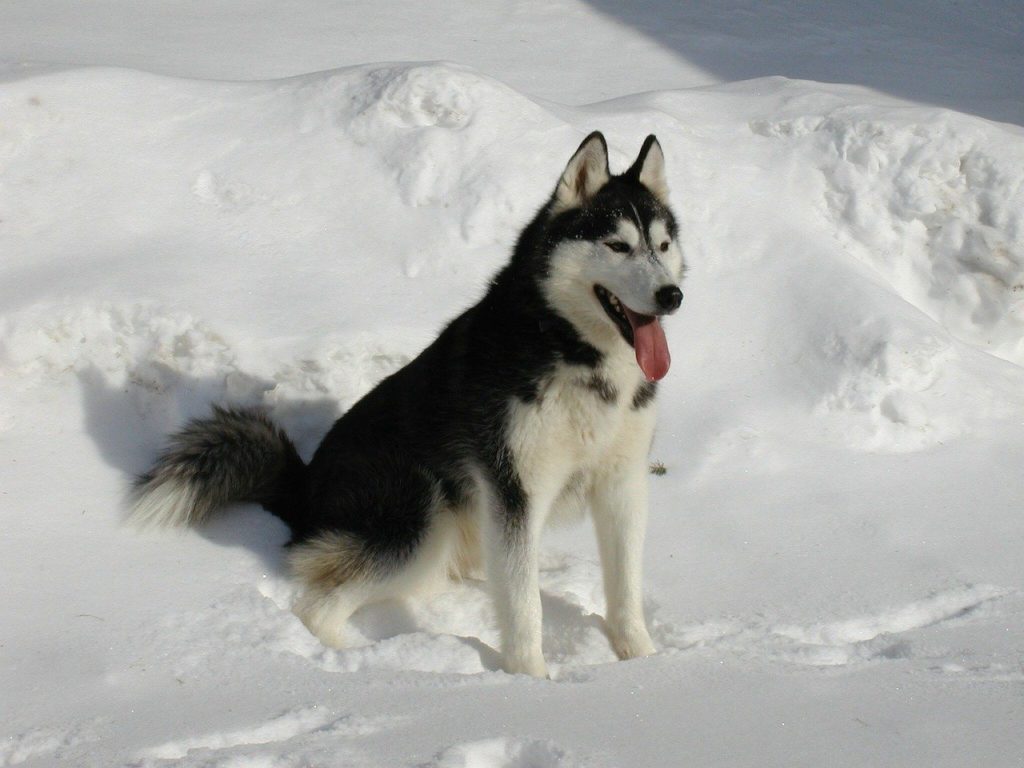
If you need a guard dog, this Husky Breed is not for you. Siberians are very affectionate to humans and animals alike. Smaller than the Malamute, they range in weight between 35 and 60 pounds. with a height at the shoulders between 20 and 23 inches. They have a smaller head, a closer setting of the ears and eyes, and can have a varying eye color. Their eyes can be brown or blue and they can even have one of each. They howl rather than bark and are known to be vocal. Stubborn disposition is the norm and it will take an experienced handler to train a Siberian.
3. Samoyed
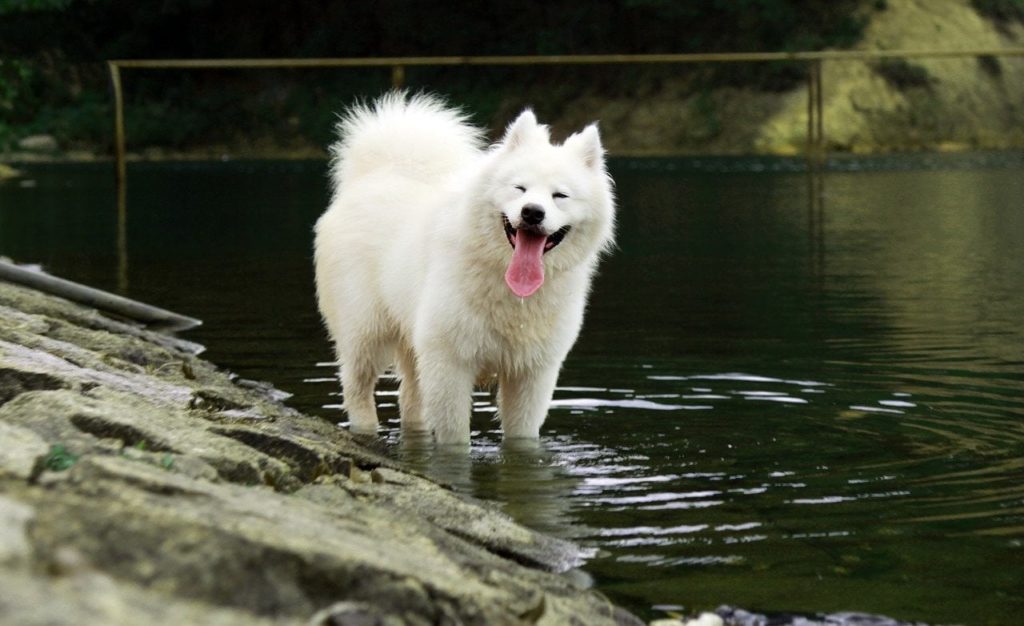
Sometimes called the Samoyed Husky, this is an inaccurate portrayal. The Samoyed is a breed of its own though very similar in stature to the Siberian Husky. Standing approximately the same height at the shoulders, they are a slight bit smaller in stature, averaging no more than 55 pounds. Purebred Samoyeds will only be white or cream in color and aggression is very rare. They are characteristically unique as they possess a working dog and a family dog behavior simultaneously. This Husky Breed needs consistent exercise and training or they could develop some bad behaviors.
4. Labrador Husky
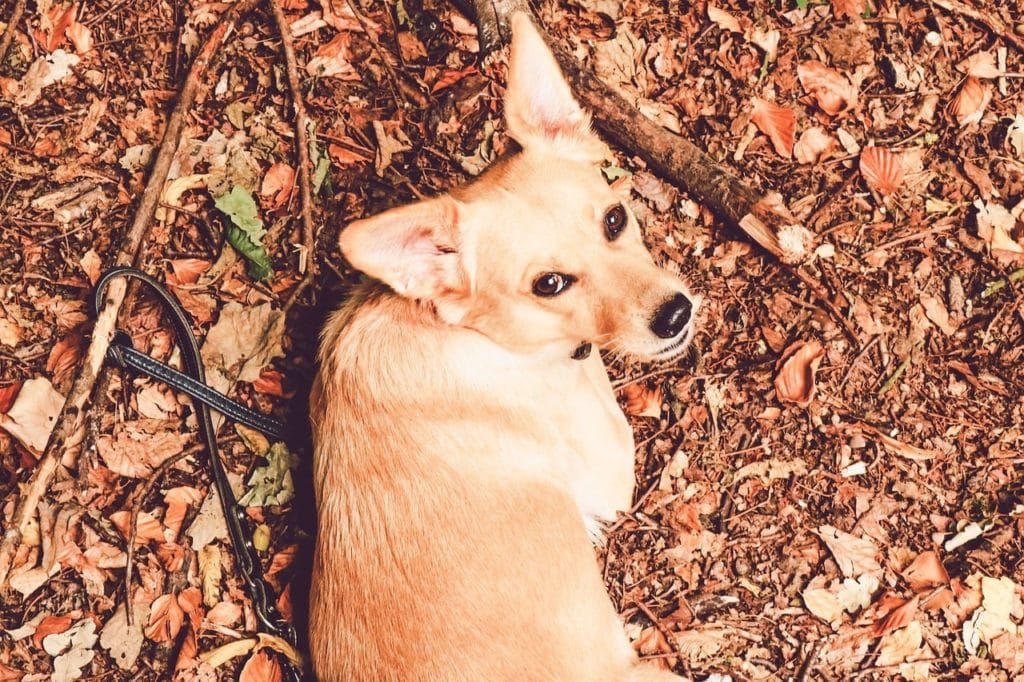
Don’t be confused by the name of this Husky breed. They are not a cross between the retriever and a Husky; they are a breed all their own. The Labrador Husky has inherited some features of its distant cousin, the wolf, which gives it the most wolf-like appearance of all the huskies. They are medium to large in size with a very even temperament. Their prey drive is strong, so the introduction of other family pets must be done with care. They are prone to some health issues that include hip dysplasia.
5. Miniature Husky
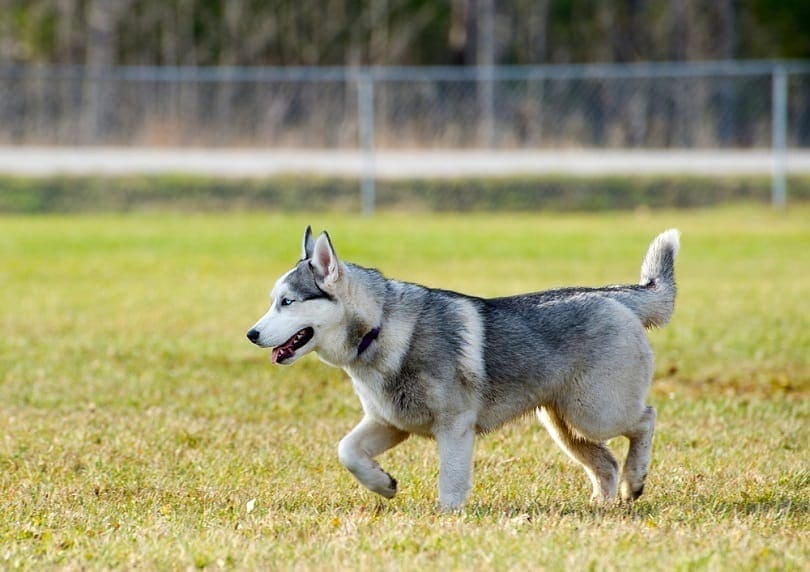
Standing at a maximum height of 16 inches at the shoulder and reaching a maximum weight of 35 pounds, this little guy is bred to look like a Siberian. They are loving and loyal family dogs but less active than the larger type of Husky breeds. The Miniatures have a variety of colors to their coat. They can be black and white, grey and white, or red and white. Piebald is also a possibility for coat color. Like their Siberian cousin, the Miniatures also have a stubborn streak.
6. Greenland Dog
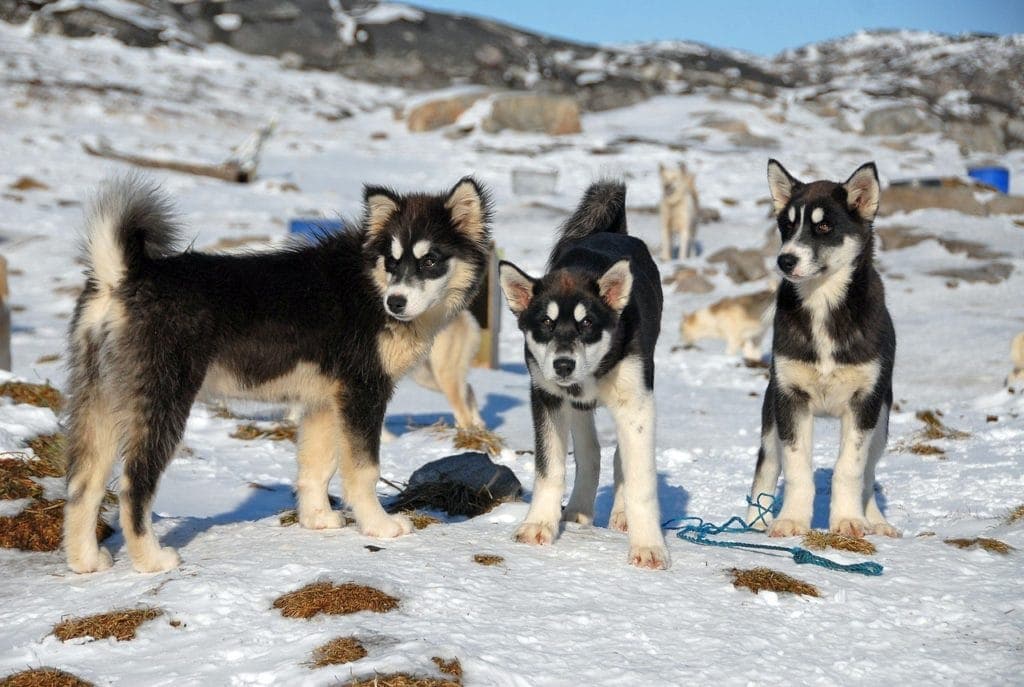
With a strong pack mentality, these dogs need to be kept in groups of two or more. The males are slightly larger with a height that tops out at 27 inches at the shoulder, while the females can be as small as 20 inches at the shoulder. The weight of both the male and female will generally fall between 66 and 71 pounds. Coat colors of black, white, grey, or spotted white can be found within this breed. They bond well with their owners and do great in family settings. Strong-willed and stubborn Greenlands require an owner who is experienced and willing to be the alpha dog.
7. Alaskan Husky
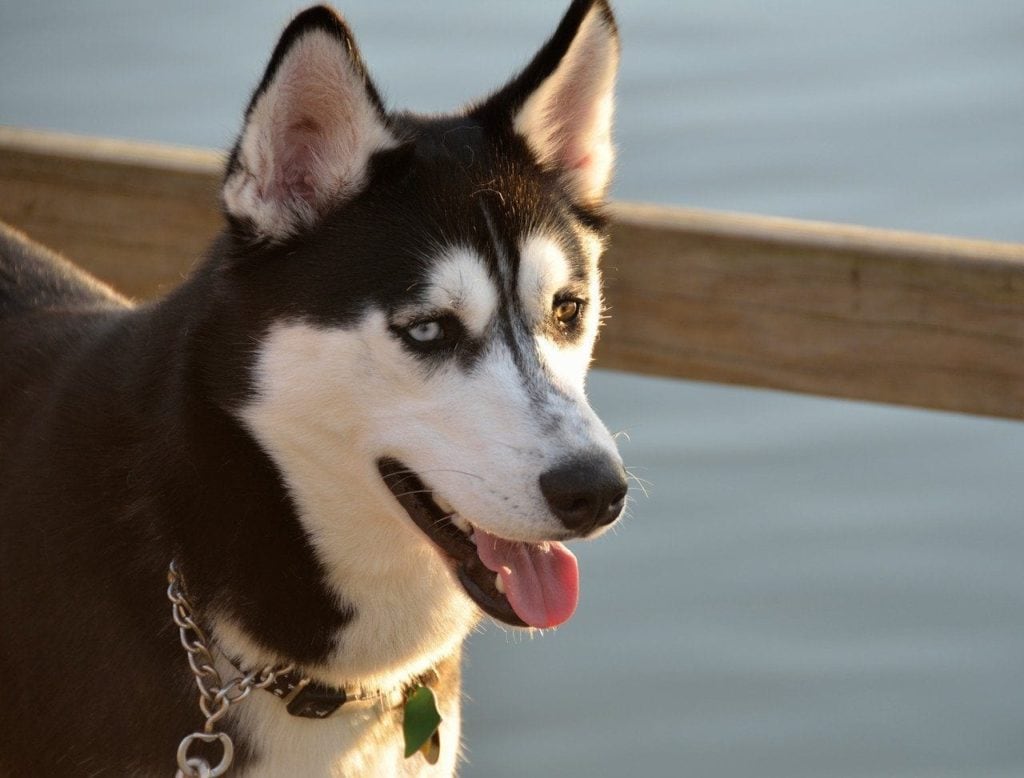
Ranging in weight between 35 and 50 pounds, this type of Husky breed stands taller than their Siberian cousins. The slender frame makes them faster than their counterparts of equal size, while maintaining a similar level of strength. Varying in color, they tend to have brown eyes with an athletic body and general wolf-like features. This great companion dog is judged solely on their ability rather than their genetics.
- Need help finding a brush for your Husky? Click here to see our reviews!
8. Chinook Dog
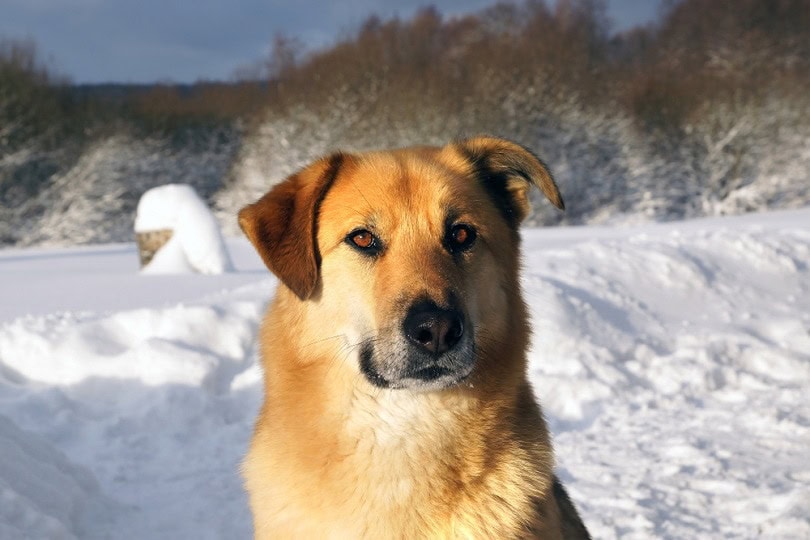
This rare Husky breed was developed as a sled dog in New Hampshire. Males are the larger, ranging in height at the shoulder between 23 and 27 inches. The female comes in a few inches shorter and they both fall in a weight range of 55 to 90 pounds. Wonderfully-bred with a great temperament, they can be described as dignified and intelligent, as well as calm and friendly. White, fawn, black and tan, as well as grey, tan, and buff, are the rainbow of coat colors to be found with this breed.
Overview of the Husky Breed
The Husky is not for the novice dog owner. There are consistent traits and specific care within the breed. Exercise must be a priority to ensure proper health and well-being. Working-class dogs need a job for mental stimulation and physical fitness. By no means are any of these Husky breeds apartment dogs. Considered to be one of the harder dogs to train, stubbornness is present in all types of Huskies. One must establish themselves as the alpha dog within your family unit (or pack).
Grooming and awareness of warmer weather are crucial to the health of every Husky breed. They all have an undercoat to keep warm and they all shed twice a year. Bred to work with other dogs, pulling sleds, they do not like to be alone for long. A weekly, if not daily, time commitment must be made with these breeds. Remember that you might not have them for your whole life but they have you for theirs. When entering into a relationship with a Husky, knowledge is the key to success, both for you and your dog.
A lot of people have also been asking about the difference between the Malamute and the Siberian husky. For a comparison, we recommend this resource.
Featured Image Credit: Nataliia Pushkareva, Shutterstock

